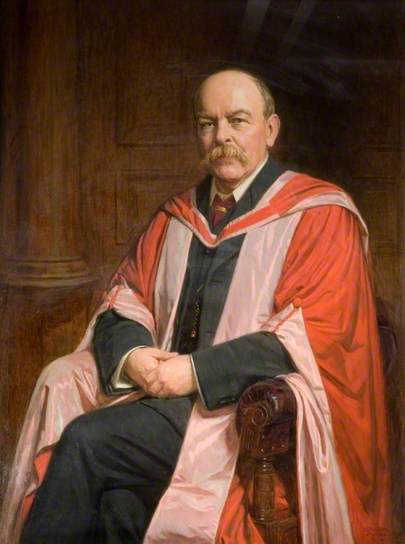
by Dr Robert W. Whitworth
John Henry Poynting was the first professor of Physics at Mason College, which later became the University of Birmingham. A few months ago his granddaughter Elizabeth (now aged over 90) visited the University, and I had the pleasure of showing her things relating to her grandfather in the Department that he had founded. On this occasion she presented the University with a handwritten manuscript. It was the text for a couple of lectures that he as a young professor (age 33) had given in Mason College in 1886. The subject was ‘How the weather is foretold’. The lectures were illustrated by numerous demonstrations and figures (presumably lantern slides), but we have only the written text.
He starts by describing the nature of air and in particular that it has weight and exerts pressure on the ground that can be measured with a mercury barometer. People have barometers and know that the pressure varies between 28 and 31 inches of mercury, but in spite of what may be printed on the dial a single reading ‘tells us nothing directly about the weather’. He proceeds to demonstrate how temperature changes the density of air, and then explains why in the afternoon of a sunny day a wind blows from the cold sea toward the heated land. Next he considers the role of water vapour, which can be taken up over the ocean and later condensed to form clouds, mist or rain when the air cools down.
The important thing for weather forecasting is to know how the atmospheric pressure varies from place to place and charts had recently been produced giving this information. Showing such charts, he explains why winds do not blow straight from regions of high to low pressure but circulate around cyclones or anticyclones due to the rotation of the Earth. (For this audience he does not use the concept of Coriolis force, though he would have known it.) Understanding the weather depends on knowing how the pressure distribution seen on the charts moves across the country and leads to the formation of winds, clouds and rain. If low pressure is seen developing on the west coast of Ireland and drifting east we can predict storms somewhere over England, but by the time the information has been transmitted to the Met Office, the forecast prepared, sent to the newspapers, printed and distributed it arrives too late! Poynting points out that they can do better in America where the land area is so much greater.
His concluding paragraph reads:
Even now the Meteorological Office is remarkably successful considering the enormous difficulty of the problem which it has to solve. It is absolutely right in almost 1/3 of the cases, partially right in nearly two out of three of the rest and only fails in less than 1/4. If so much can be done while the science of weather forecasting is in its early youth - it has only existed for 20 or 30 years - we may fairly look forward to great achievements in the future. A time will come when on opening the morning paper we shall know as certainly what are the weather fixtures for the day as we now know from the advertisement column what are the public meetings or concerts for the evening.
In retrospect we may observe that Poynting did not seem to know about air masses or frontal systems. The main problem at the time was lack of information about conditions over the Atlantic Ocean, but information from ships could not be received quickly enough until the invention of wireless telegraphy some 20 years later.
The original lecture notes are now in the care of the Cadbury Research Library, but we retain a copy in Physics.